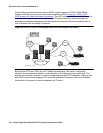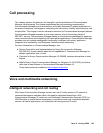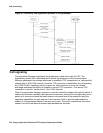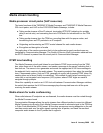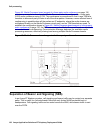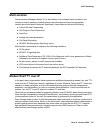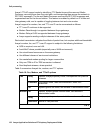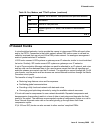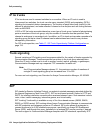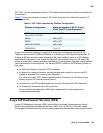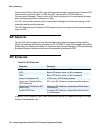
Call processing
132 Avaya Application Solutions IP Telephony Deployment Guide
Avaya's TTYoIP support works by identifying TTY Baudot tones at the near-end Media
Processor, removing them from the voice path, and transporting them across the network in
RFC 2833 messages. The far-end Media Processor receives the RFC 2833 messages and
regenerates them for the far-end station. This feature is enabled by default on IP trunks and
inter-gateway calls, and is capable of toggling between text and voice modes.
Avaya's support for modem, fax, and TTY over IP can be summarized as follows:
● TTY over IP continues to be supported
● Modem Pass-through is supported between Avaya gateways
● Modem Relay at 9.6K is supported between Avaya gateways
● Avaya supports sending multiple instances of the same packet
Redundant transmission mitigates the effects of packet loss, but requires additional bandwidth.
Avaya's modem, fax, and TTY over IP support is subject to the following limitations:
● QOS is required, even on LAN.
● Avoid MoIP where possible (especially over a WAN environment)
● Use circuit-based resources on the same gateway
● Use different classes of service and restrictions
● Use centralized modem pooling for larger communities
● Only one TDM-to-IP-to-TDM conversion is allowed
● Send duplicate streams, where practical
Table 3 summarizes Avaya's fax, modem, and TTY options.
Table 16: Fax, Modem, and TTYoIP options
Fax
relay
Default, Avaya-proprietary mode, interoperates with previous
releases
Pass-thru
Proprietary mode; uses more bandwidth, fewer DSP
resources
off
system ignores fax tones, call remains in administered codec
Modem
off
Default, system ignores modem tones, call remains in
administered codec
relay
Avaya-proprietary mode, most reliable modem-over-IP mode
pass-thru
similar to Fax pass-thru
1 of 2



